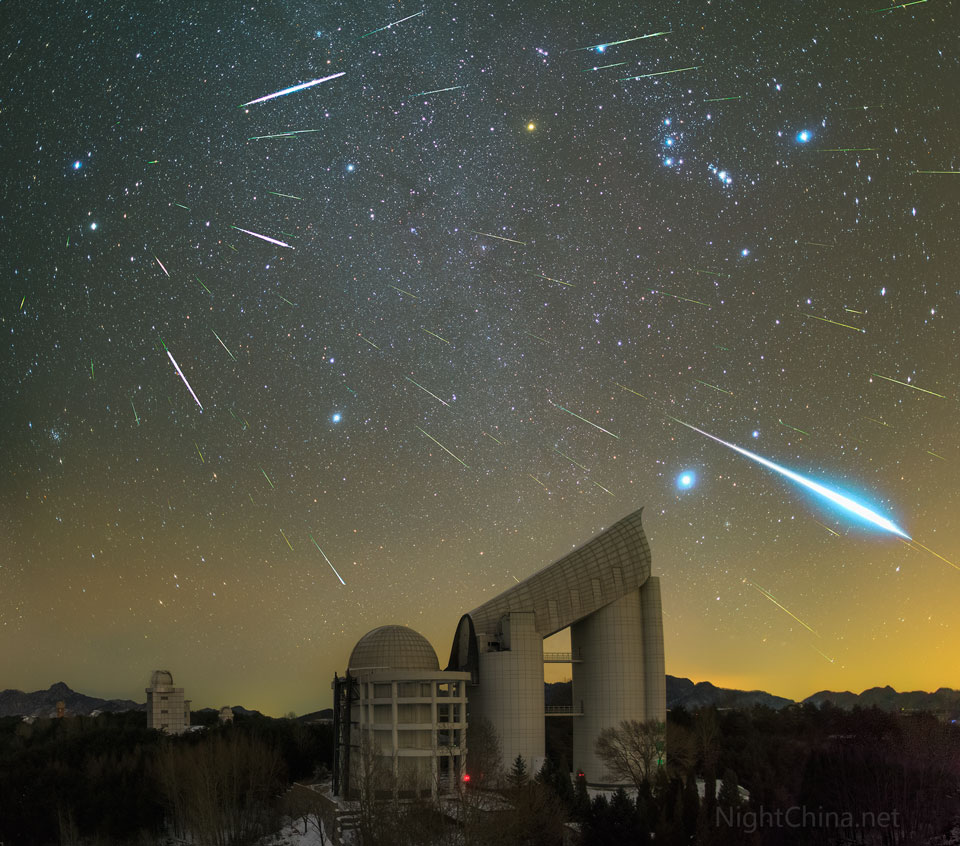2020年12月13日
Geminid Meteors over Xinglong Observatory
Image Credit & Copyright: Steed Yu and NightChina.net
Explanation: Where do Geminid meteors come from? In terms of location on the sky, as the featured image composite beautifully demonstrates, the sand-sized bits of rock that create the streaks of the Geminids meteor shower appear to flow out from the constellation of Gemini. In terms of parent body, Solar System trajectories point to the asteroid 3200 Phaethon — but this results in a bit of a mystery since that unusual object appears mostly dormant. Perhaps, 3200 Phaethon undergoes greater dust-liberating events than we know. Over 50 meteors including a bright fireball were captured during the peak of the 2015 Geminids Meteor Shower streaking above Xinglong Observatory in China. The Geminids of December are one of the most predictable and active meteor showers. This year’s Geminids peak tonight and should be particularly good because, in part, the nearly new Moon will only rise toward dawn and so not brighten the sky.
Tomorrow’s picture: human made meteor
兴隆观测站上空的双子流星
影像提供与版权: Steed Yu(虞骏) and NightChina.net
说明: 双子流星是打那里来的?依天空的位置来说,就如这幅组合主题影像漂亮的展示出,产生双子流星痕的这些沙粒大小石头,看似从双子座泛流而出。依它们的天体源来论,它们在太阳系的轨迹可回溯到小行星3200 Phaethon(法厄同),然而这个结论也有点难解,因为这个不寻常的天体基本处在休眠状态。或许,法厄松小行星 释放尘埃的活动比我们所知还要剧烈,话虽如此,但到底发生了什么与为何会如此,则仍是未解之谜。摄于2015 年群流星雨的极大期之时,这幅影像记录了包括1颗明亮火流星在内的50多颗流星,飞掠过中国.兴隆观测站的上空。 12月的双子流星雨,是最容易预测也是最活跃的流星雨之一。今年极大期将出现在今晚的双子流星雨,应会特别精采,部分的缘由是近新月相的月亮,在接近日出时才升起,故夜空无月华的干扰。
明日的图片: human made meteor







